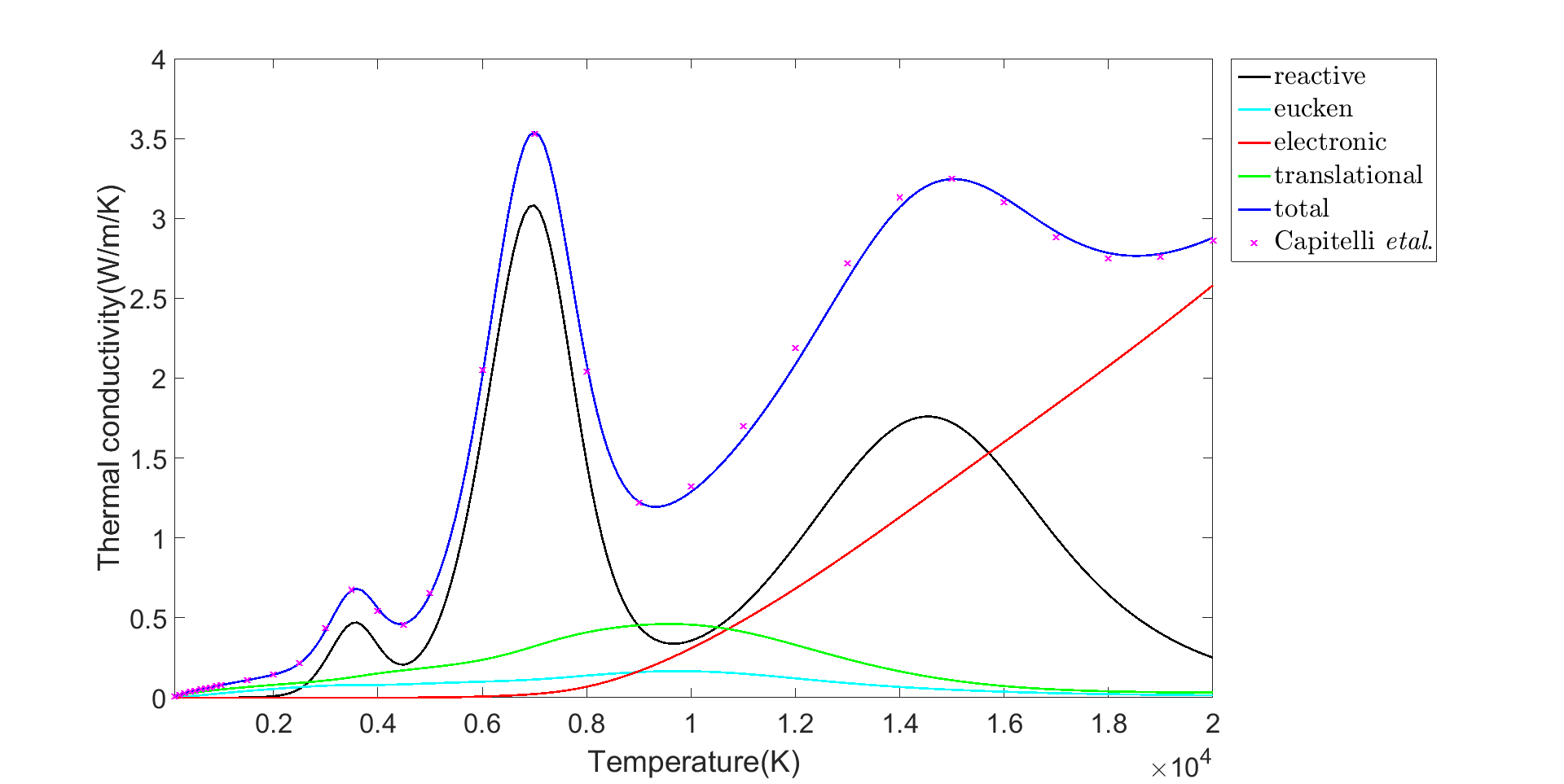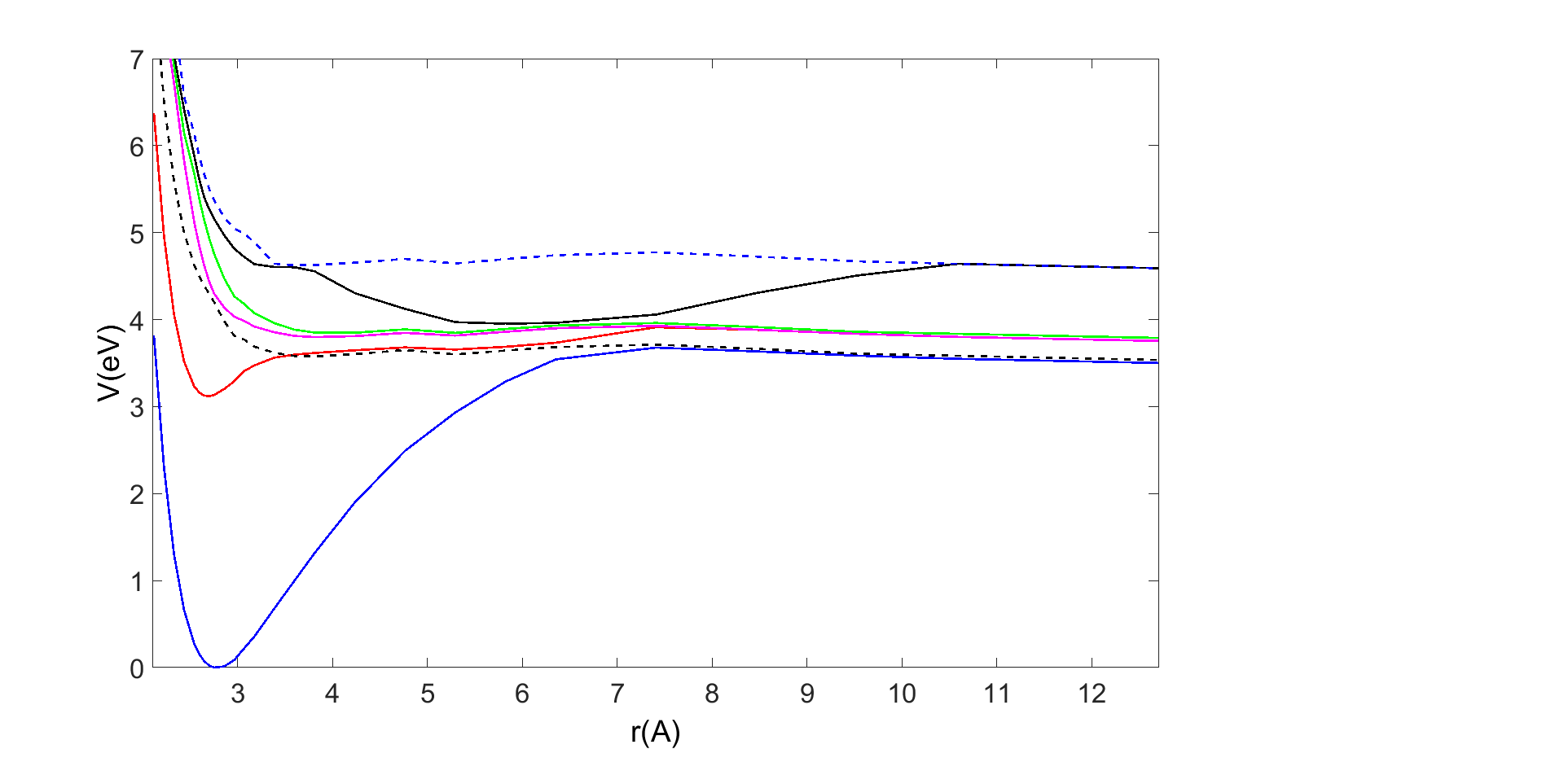Complex LTE mixtures are for example encountered in re-entry, welding, spraying and lighting. These mixtures typically contain a rich chemistry in combination with large temperature gradients. LTE conditions are also interesting because they can aid in the validation of NLTE algorithms. An example is the calculation of transport properties. For an air mixture at a pressure of 1 bar the calculated thermal conduction agrees excellently with calculations from Capitelli etal. [1].

In this work a mercury free high intensity discharge lamp is considered. The investigation focusses on using salts like InI or SnI as a buffer species. By using these species a dominant background gas like mercury is no longer present. As a consequence the diffusion algorithms based on Fick's law are no longer applicable and the Stefan-Maxwell equations must be solved. This system of equations is modified with conservation rules to set a coldspot pressure for saturated species and enforce the mass dosage for unsaturated species.

The radiative energy transport is taken into account by raytracing. Quantum mechanical simulations have been used to calculate the potential curves and the transition dipole moments for indium with iodine and tin with iodine. The results of these calculations have been used to predict the quasistatic broadening by iodine. The potential curves for InI that have been calculated using ab initio software are shown in the figure below.

References
[1] Capitelli M., Bruno D. and Laricchiuta A. (2013). Fundamental aspects of plasma chemical physics. Transport. Springer.
[2] Gnybida M., Janssen J.F.J., Dijk J. van, Suijker J.L.G., Peerenboom K.S.C., Rijke A.J., Gendre M. and Kroesen G.M.W. (2014). Numerical investigation on the replacement of mercury by indium iodide in high-intensity discharge lamps. Journal of Physics D: Applied Physics, 47, 125201. [ bib | read article ]
[3] Janssen J.F.J., Gnybida M., Suijker J.L.G., Rijke A.J. and Dijk J. van (2013). On the atomic line profiles in high pressure plasmas. Journal of Applied Physics, 114, 183301. [ bib | read article ]
[4] Peerenboom K.S.C., Boxtel J. van, Janssen, J.F.J. and Dijk J. van. (2014). A conservative multicomponent diffusion algorithm for ambipolar plasma flows in local thermodynamic equilibrium. Journal of Physics D: Applied Physics, 47(2), 425202. [ bib | read article ]